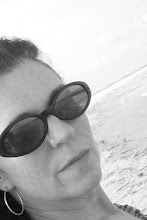
Ursula K. Le Guin's "The Ones Who Walk Away from Omelas" takes place in a Utopian society. This setting, according to Wikipedia, is defined as follows:
"Utopia is a name for an ideal community or society, taken from the title of a book written in 1516 by Sir Thomas More describing a fictional island in the Atlantic Ocean, possessing a seemingly perfect socio-politico-legal system. The term has been used to describe both intentional communities that attempted to create an ideal society, and fictional societies portrayed in literature. "Utopia" is sometimes used pejoratively, in reference to an unrealistic ideal that is impossible to achieve, and has spawned other concepts, most prominently dystopia.
The word comes from Greek: οὐ, "not", and τόπος, "place", indicating that More was utilizing the concept as allegory and did not consider such an ideal place to be realistically possible. It is worth noting that the homophone Eutopia, derived from the Greek εὖ, "good" or "well", and τόπος, "place", signifies a double meaning that was almost certainly intended. Despite this, most modern usage of the term "Utopia" assumes the latter meaning, that of a place of perfection rather than nonexistence." (http://en.wikipedia.org/wiki/Utopia).
- Reviewing the definition of Utopia, how does Le Guin's story dramatize the "double meaning" or "two sides of the utopia," a place of perfection and a place that does not exit?
- While this is a fantastic story, how can this story be read as an allegory to our world? (Allegory defined: http://www.answers.com/topic/allegory)
- What or who is the central symbol in the story? How does the symbol relate to the story's title?
- How is the idea of the "scapegoat" relevant to this story? (Scapegoat defined: http://www.answers.com/topic/scapegoat)
- Is this a "just" society? Explain why or why not?









